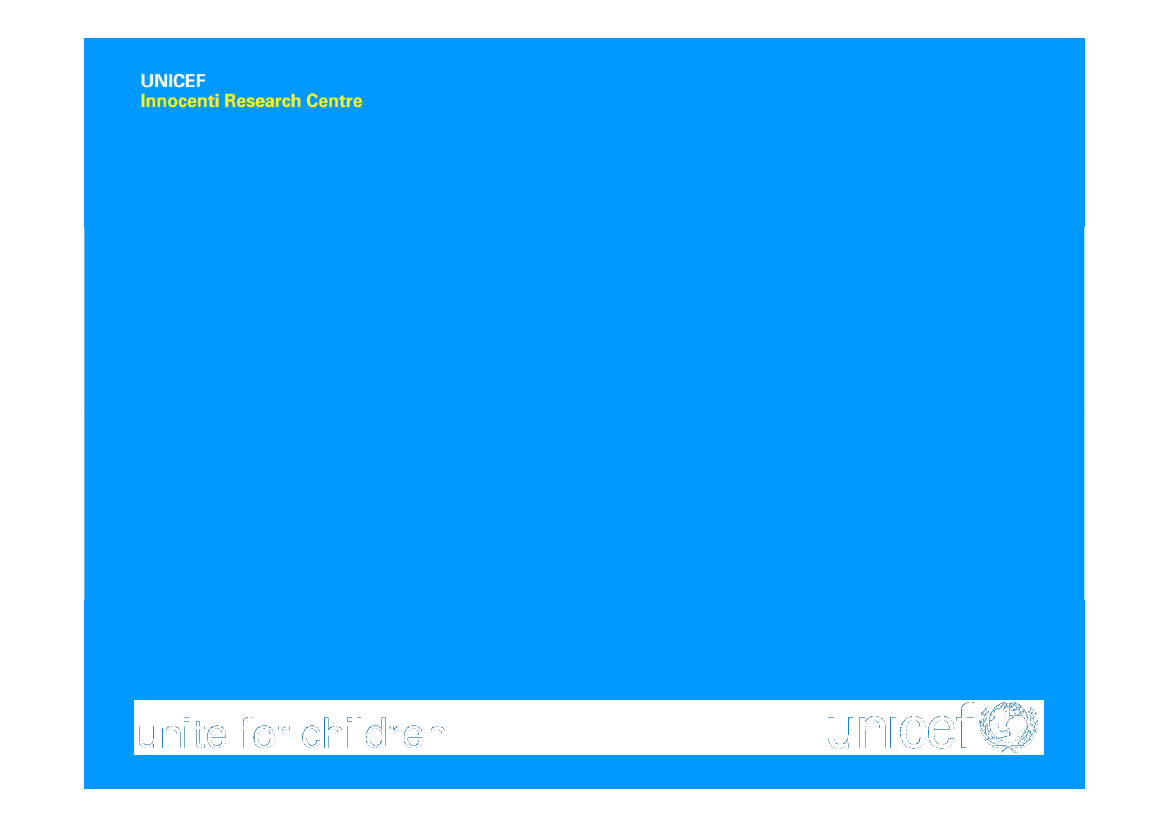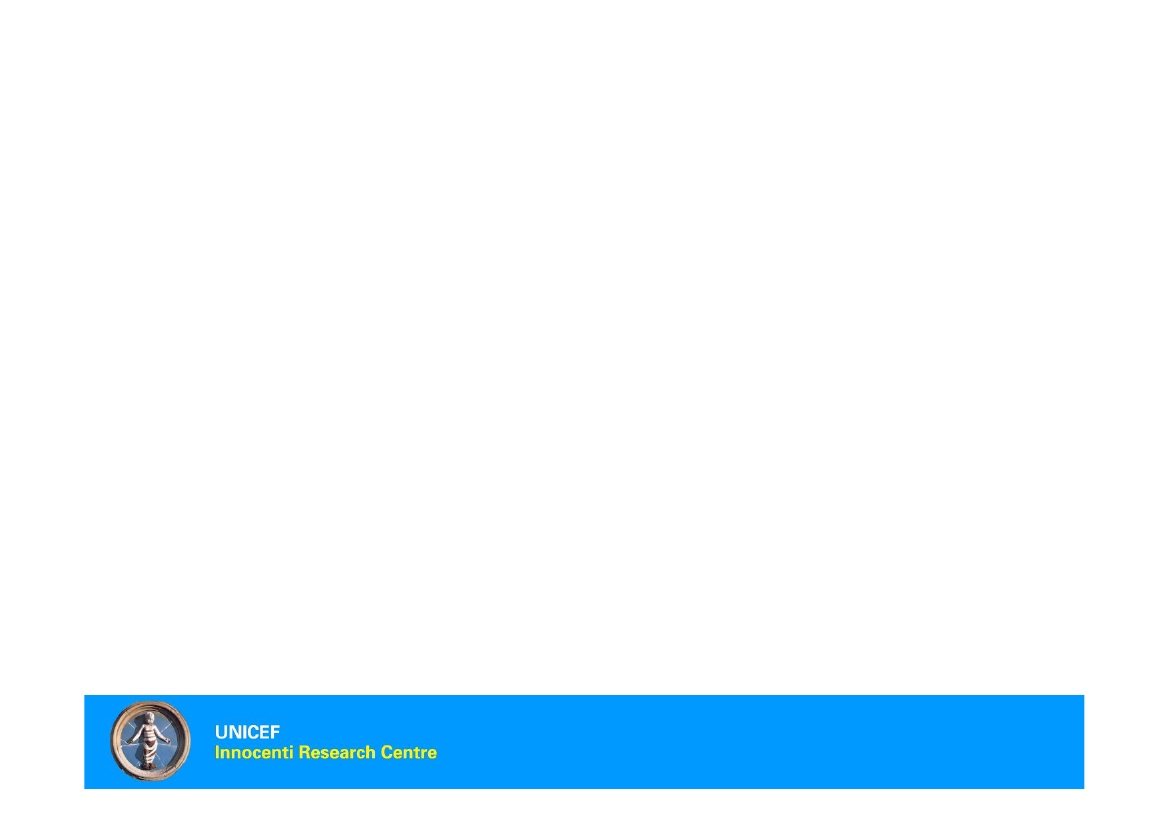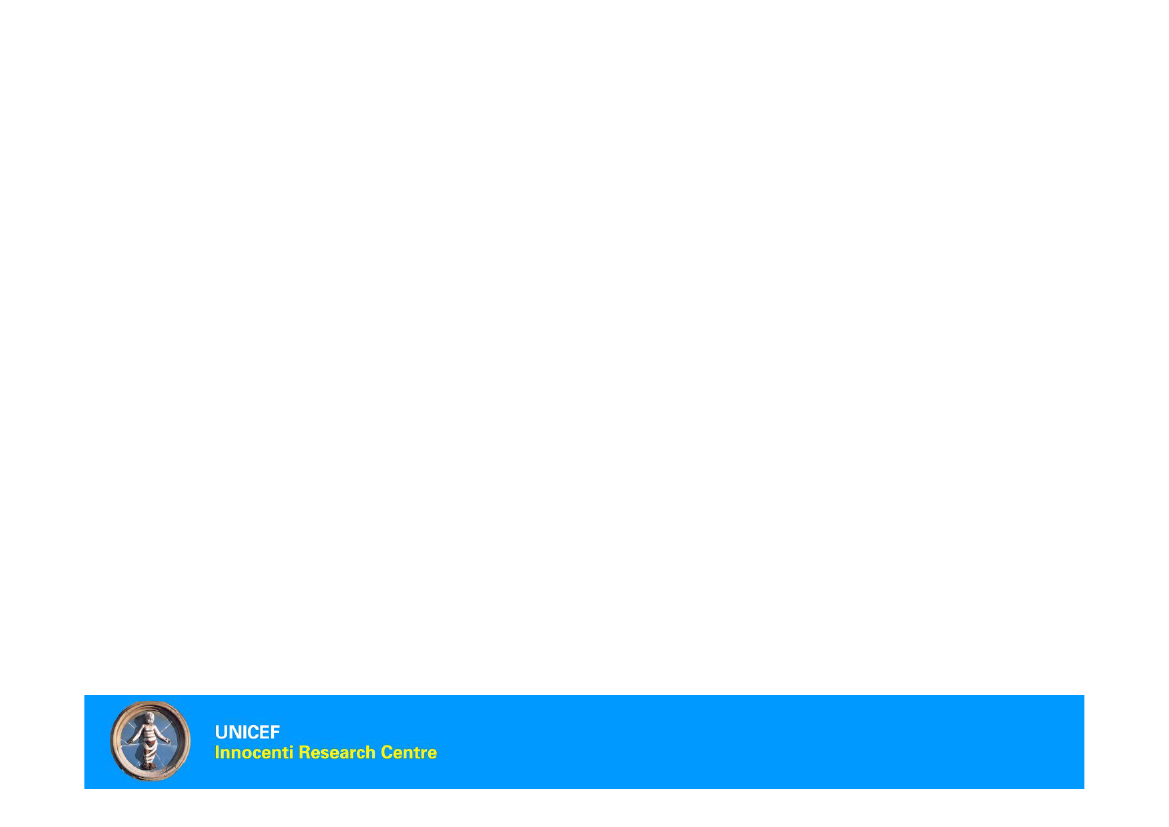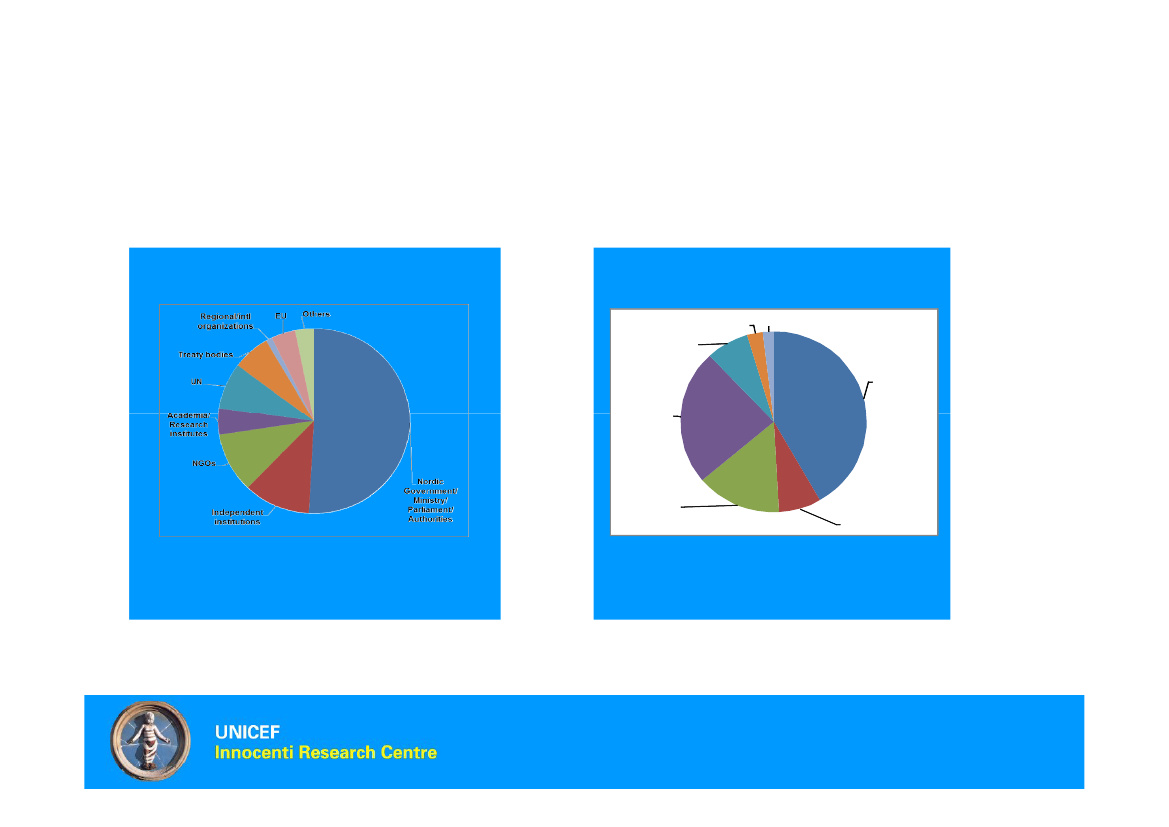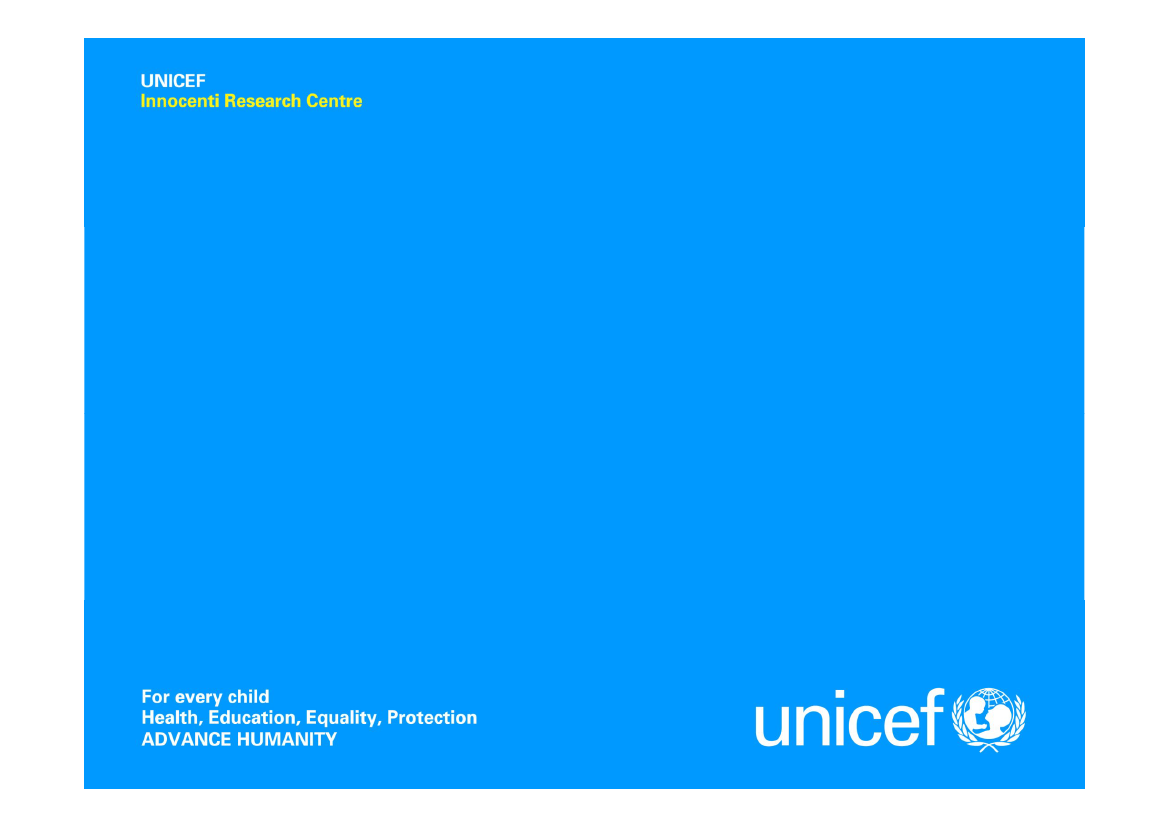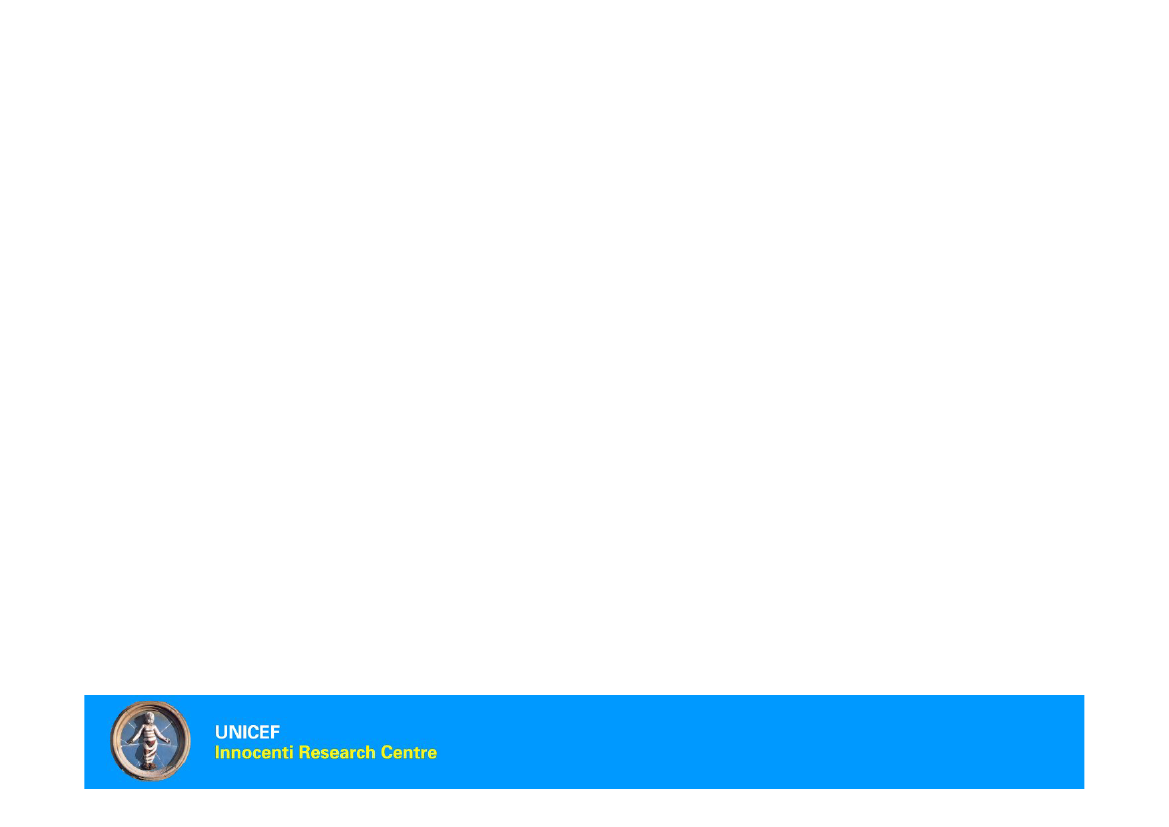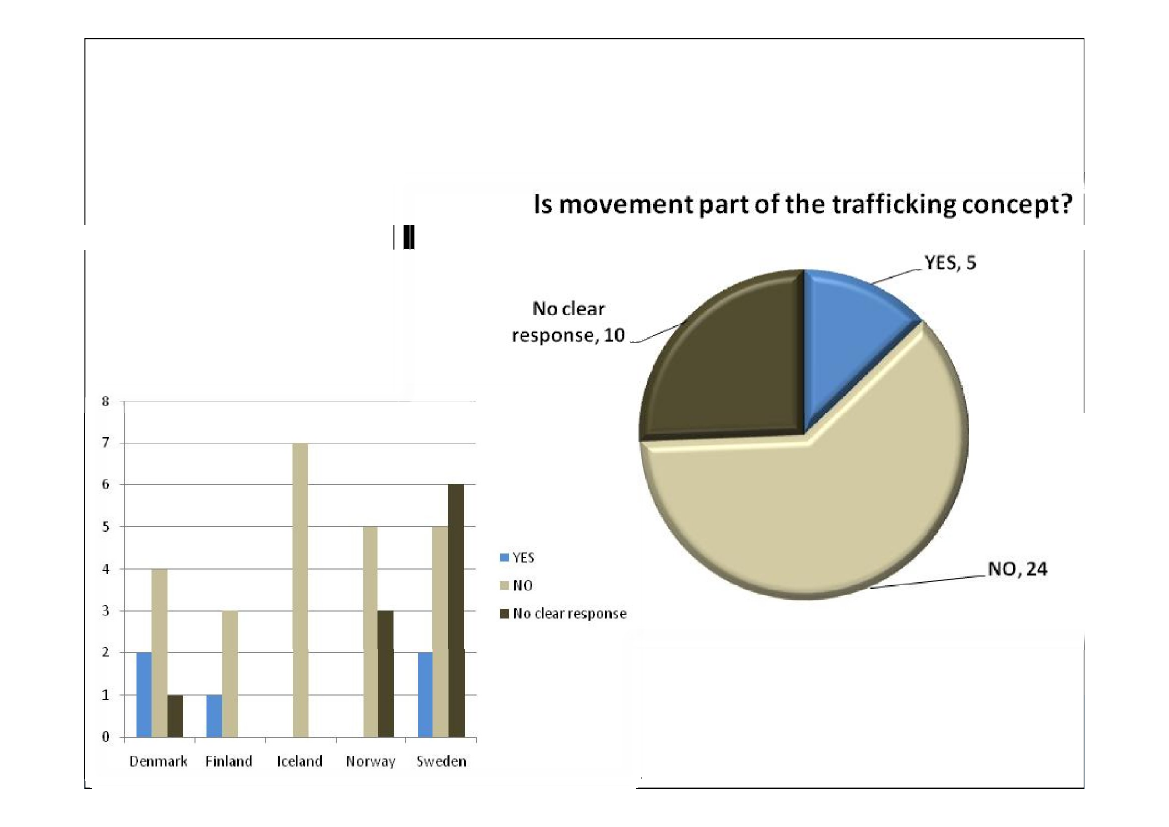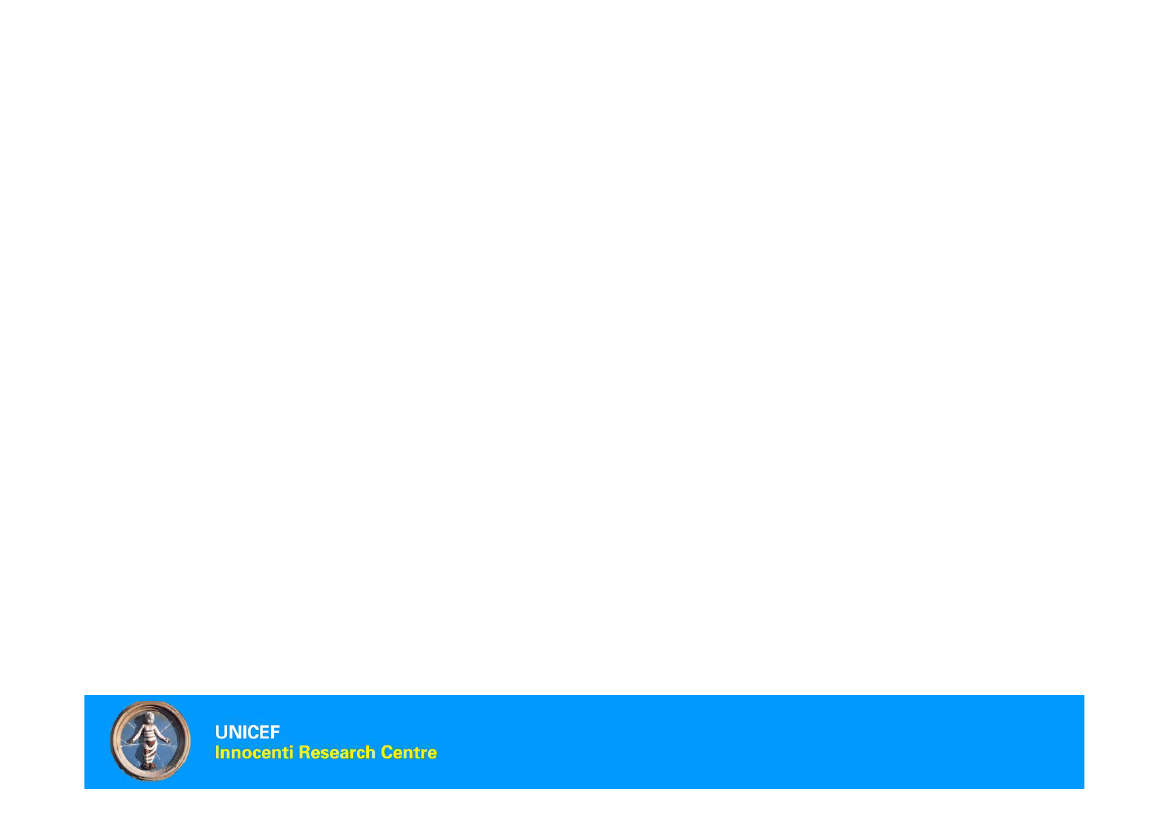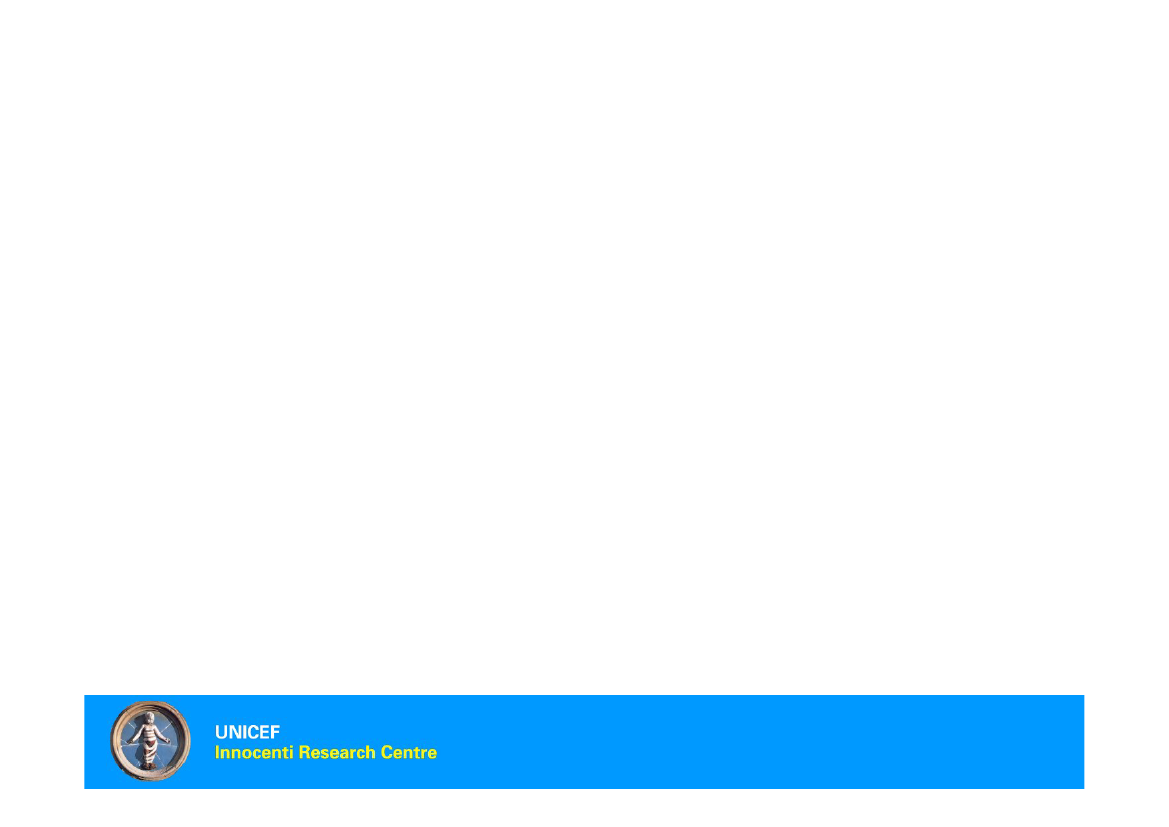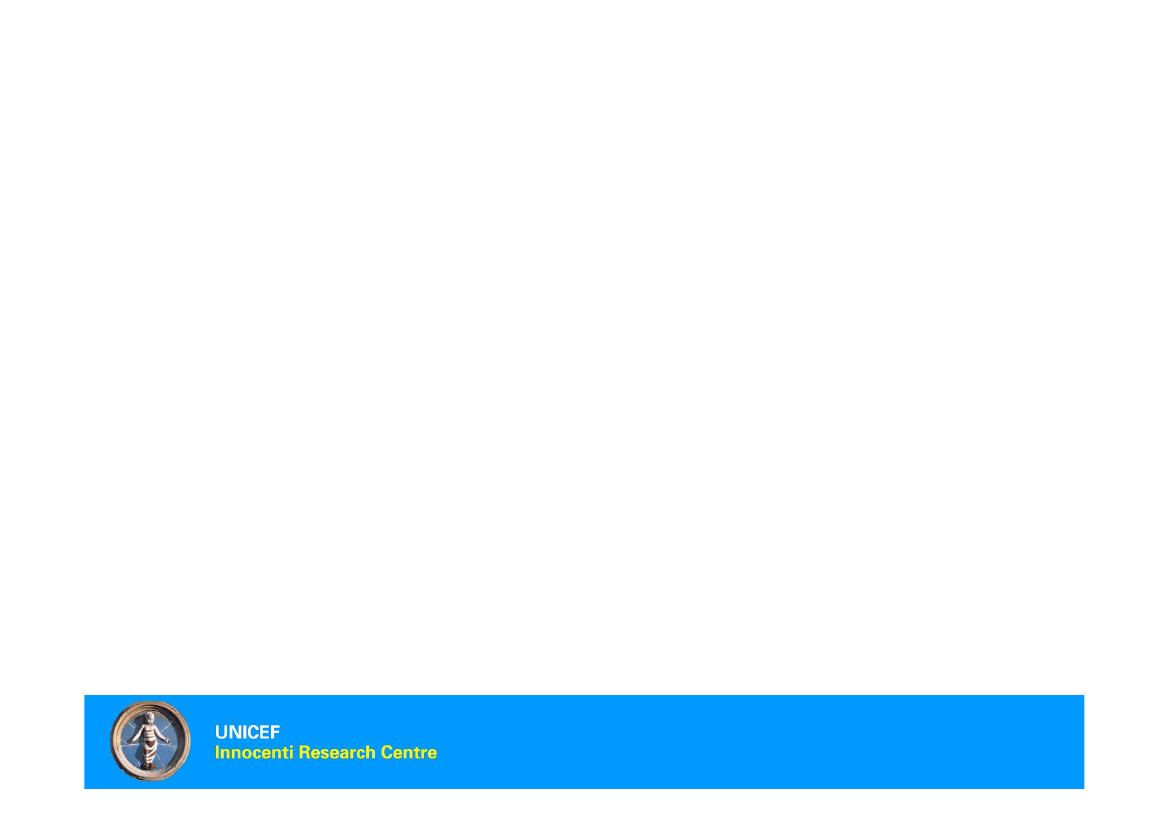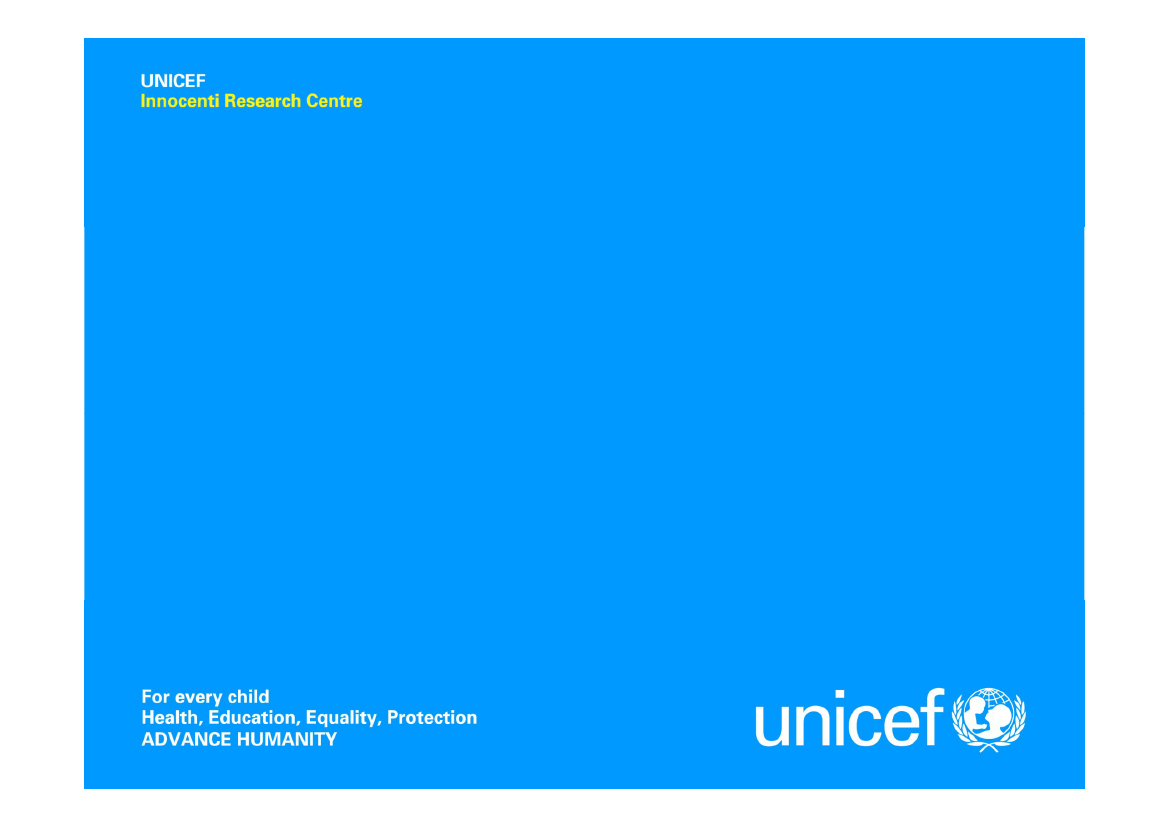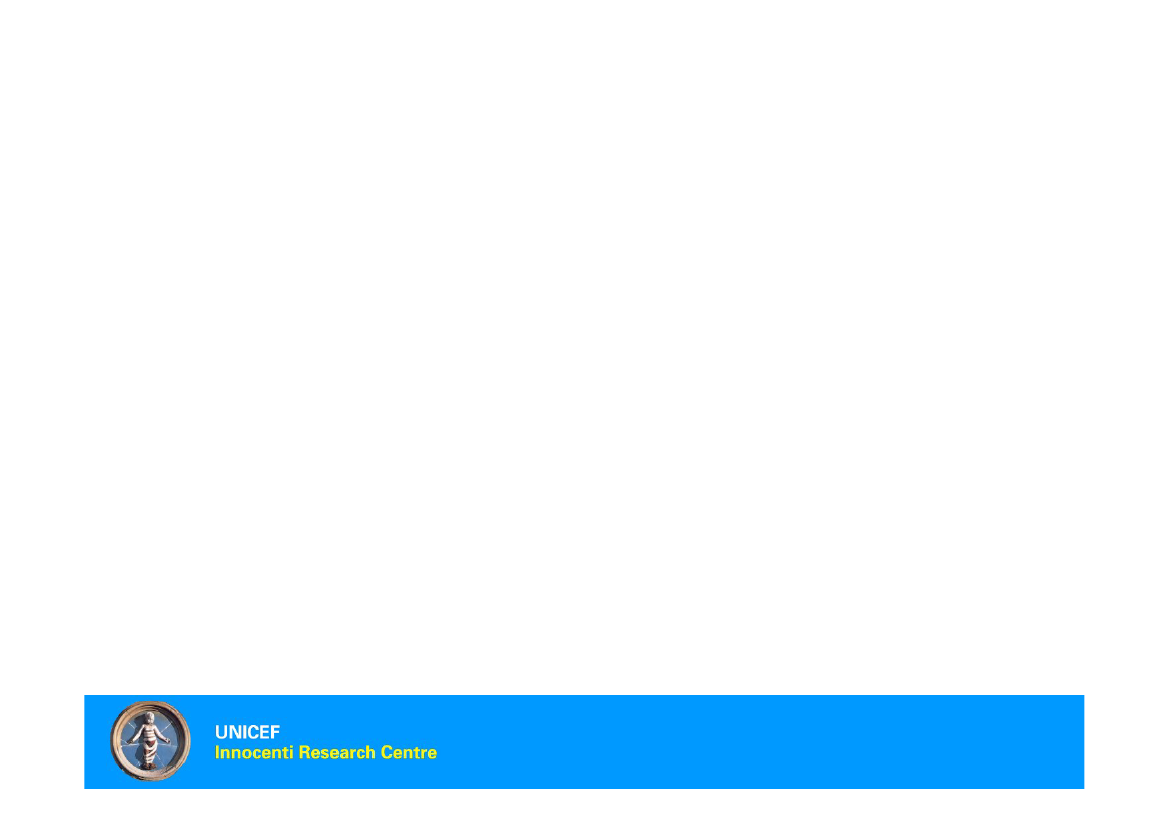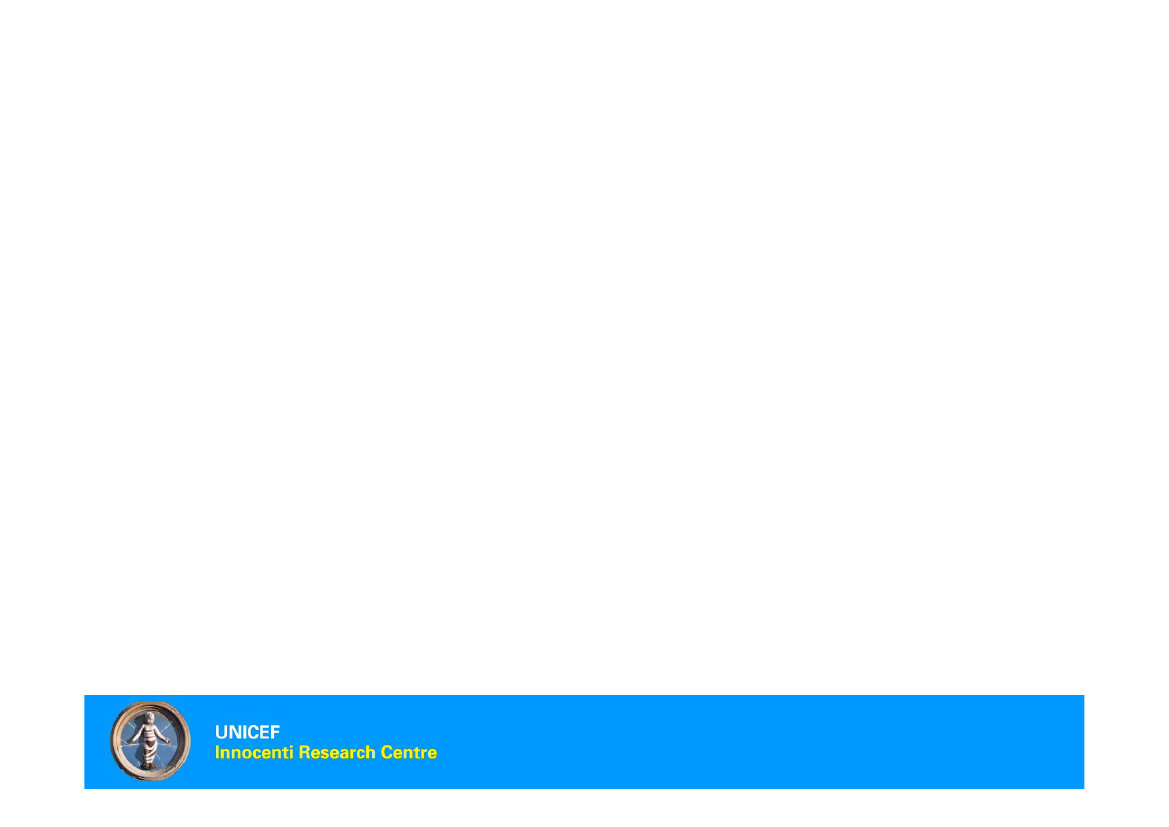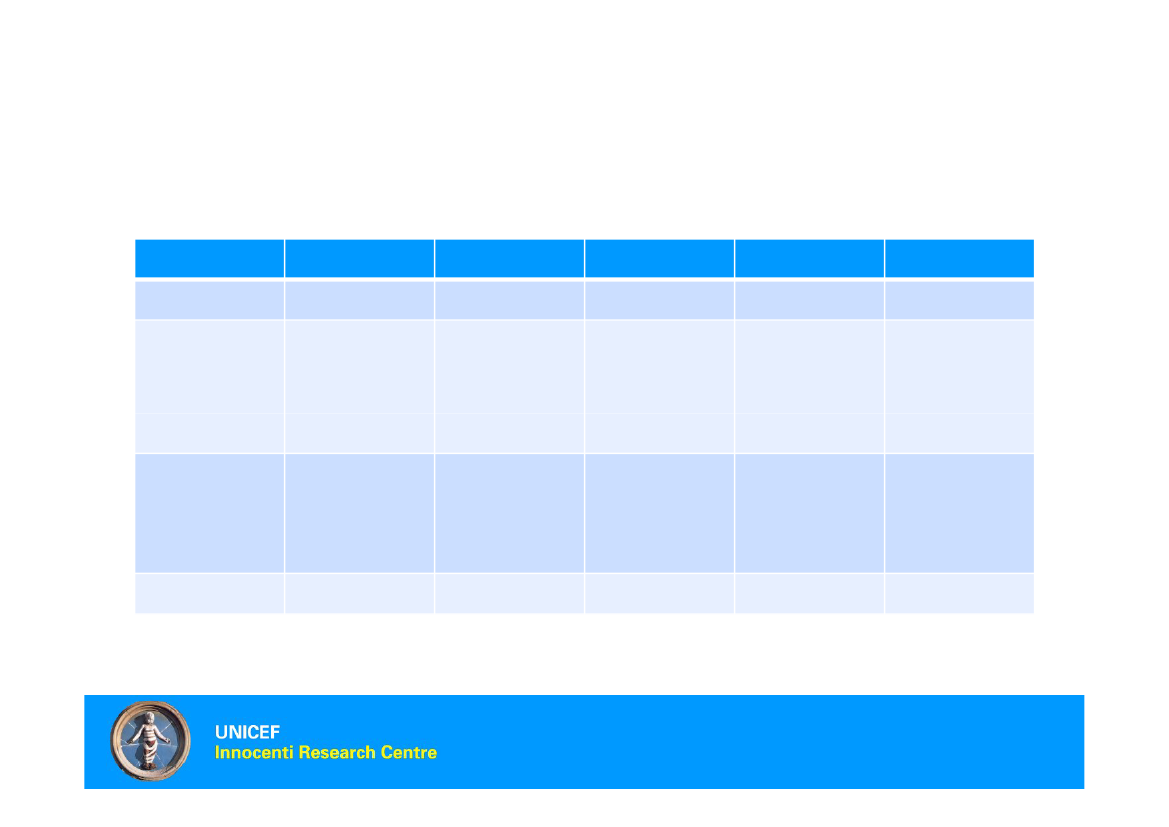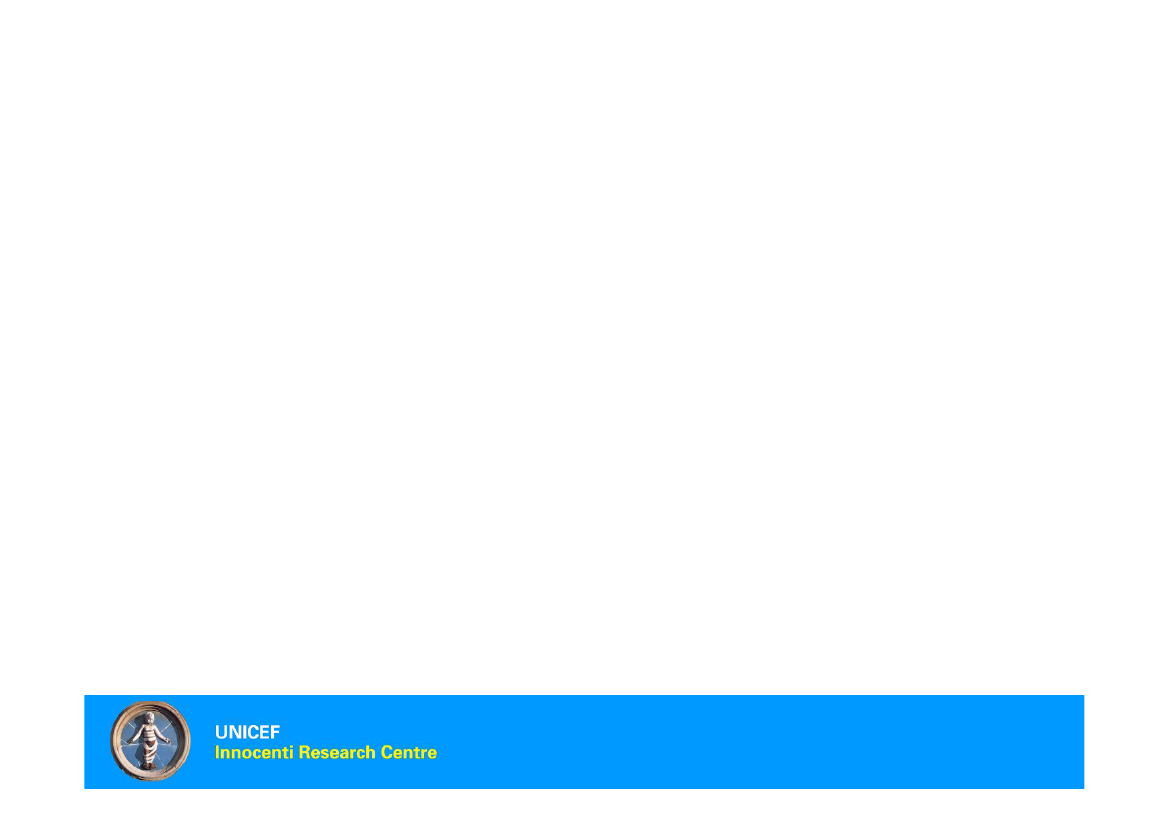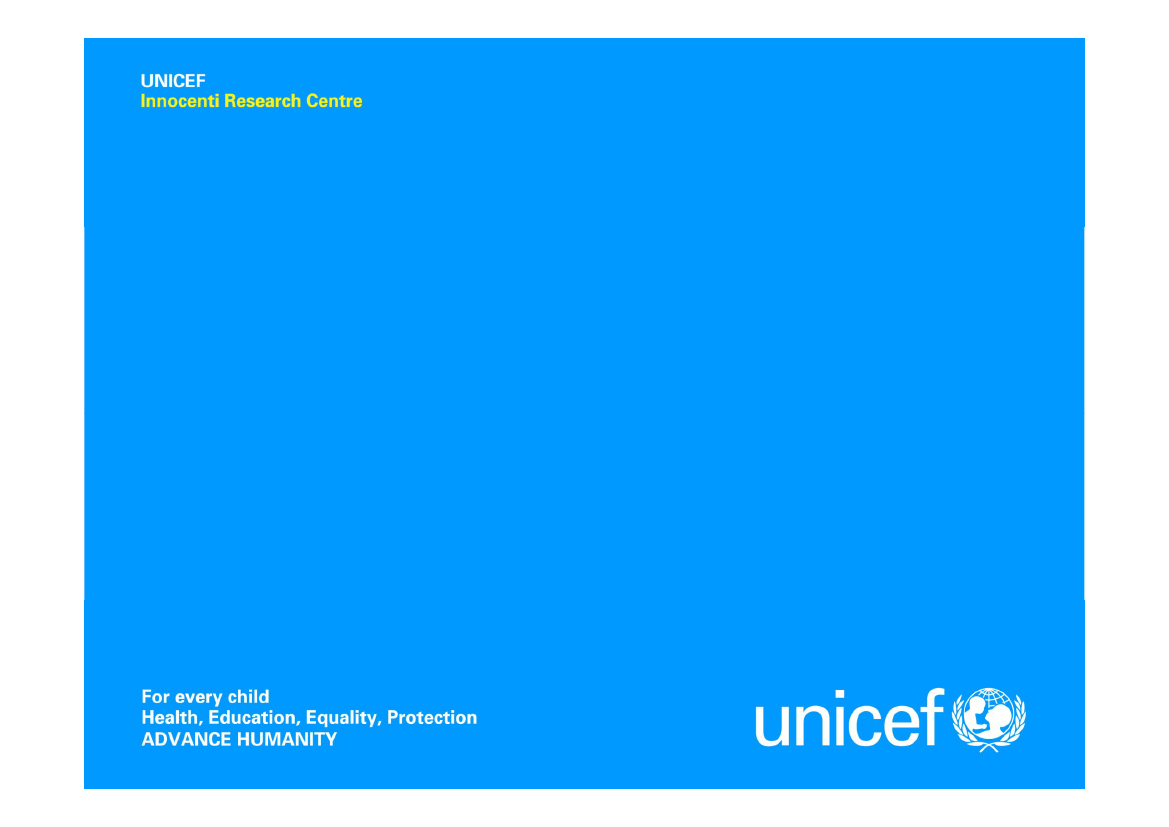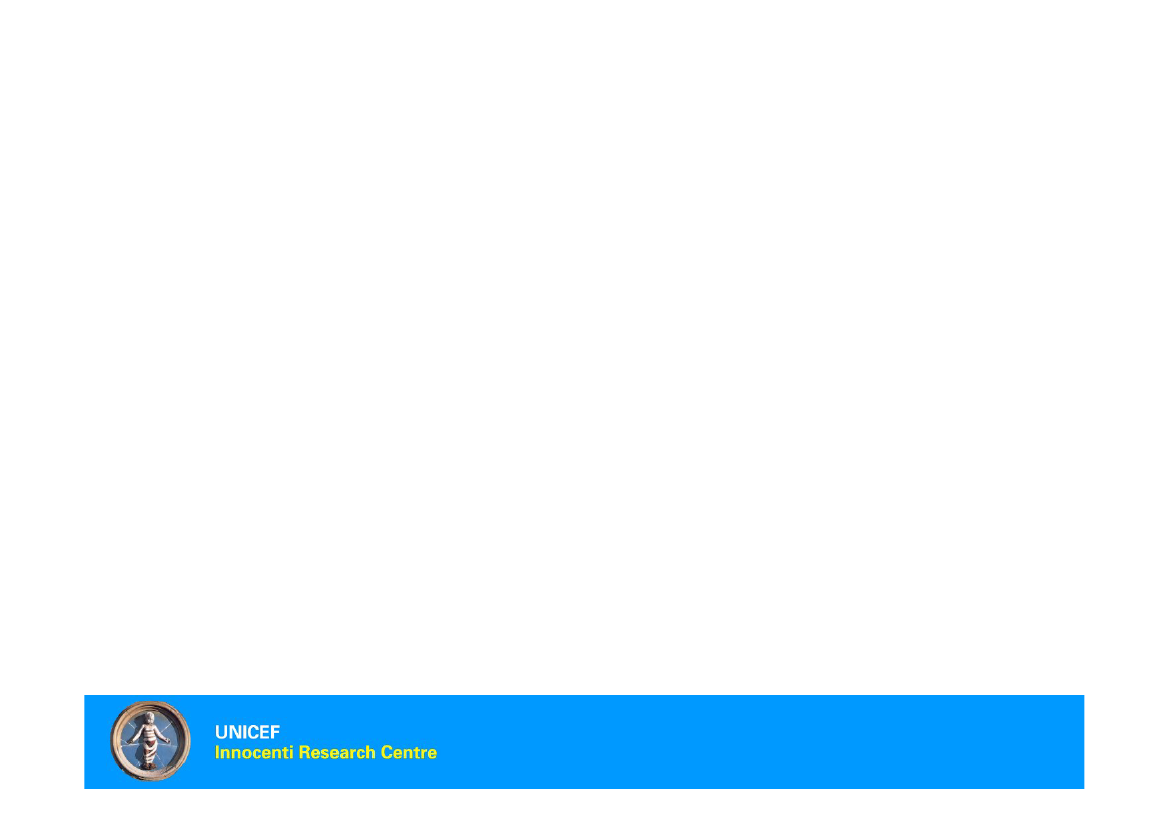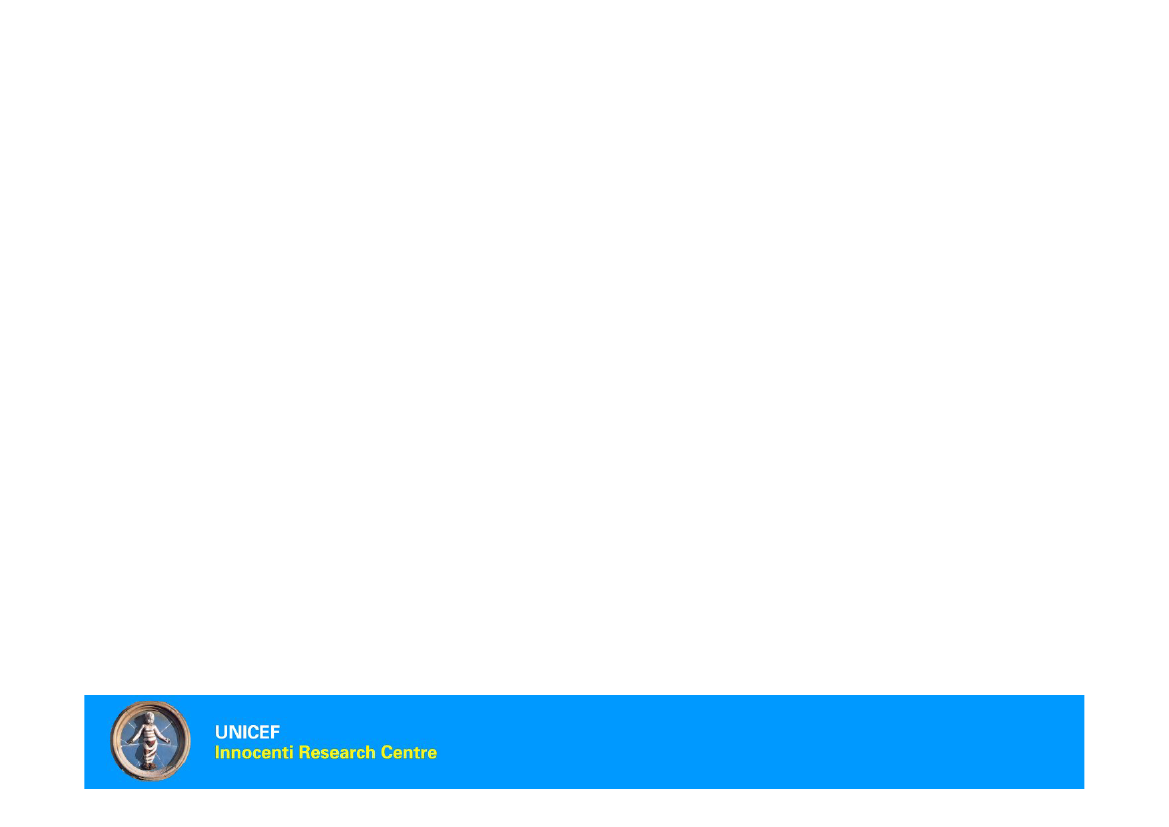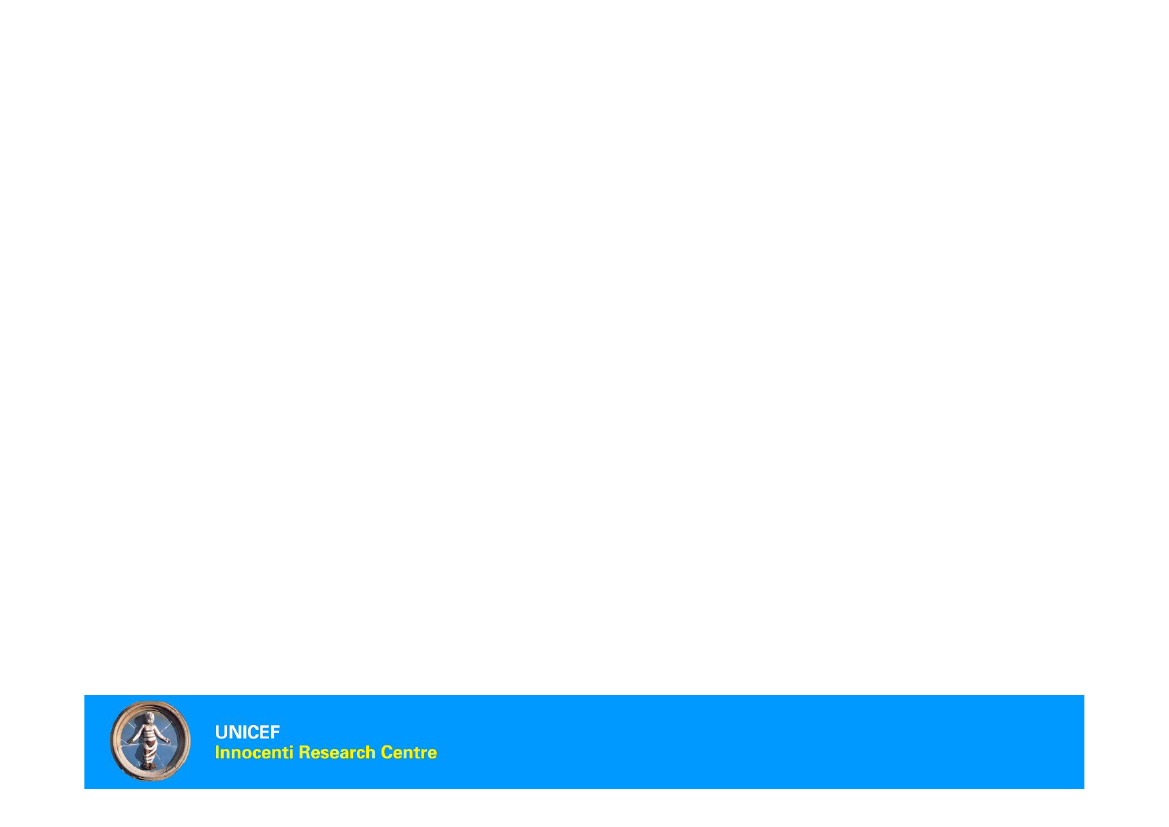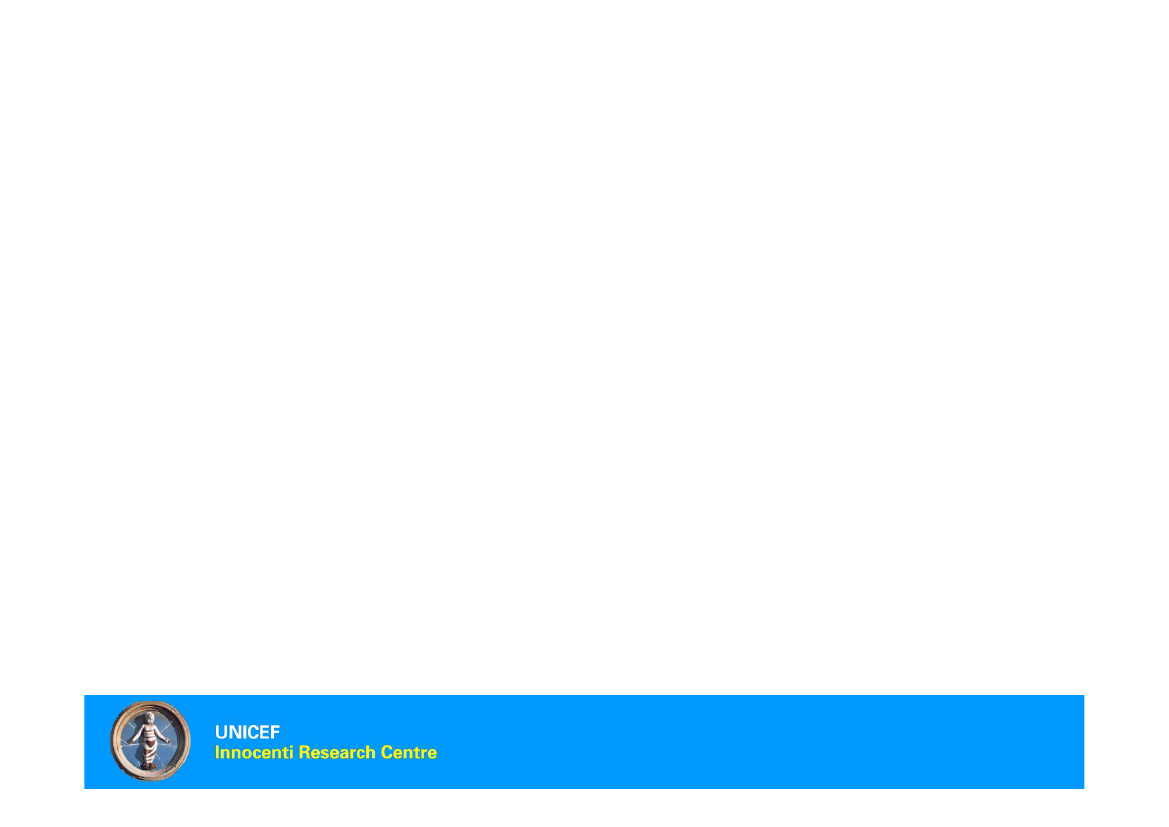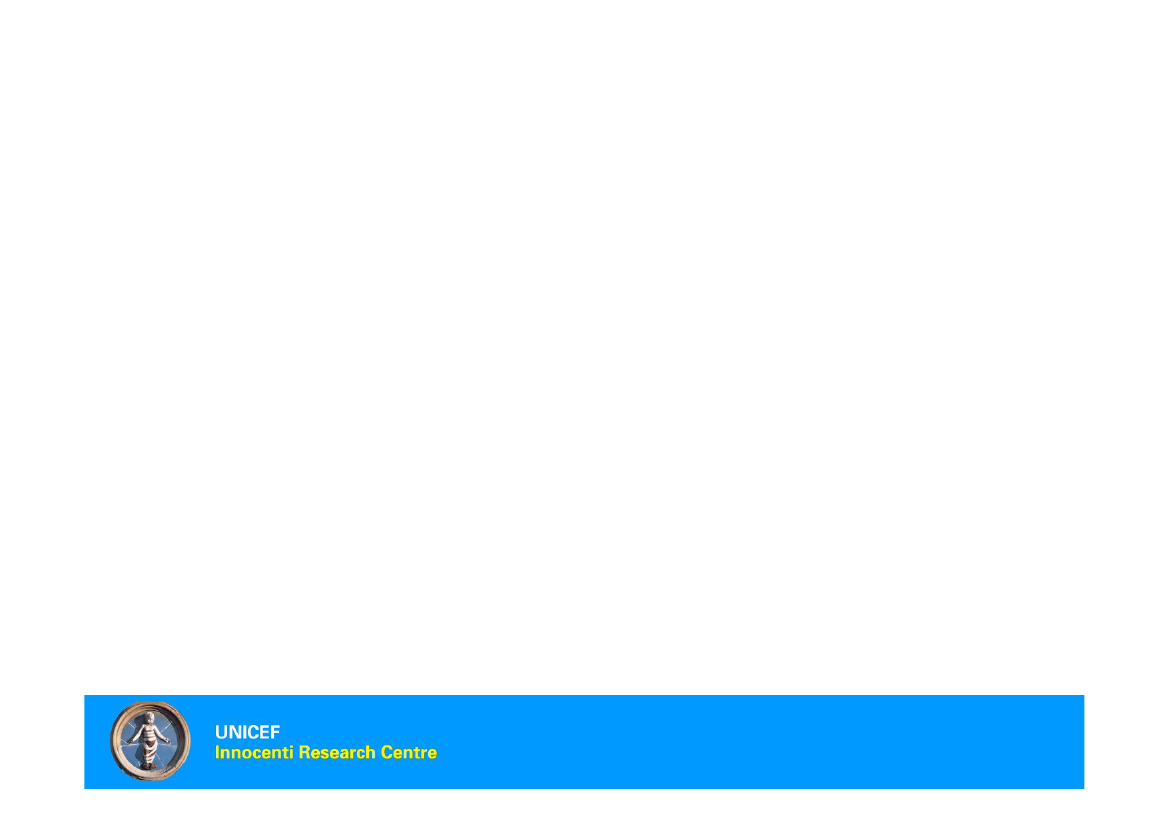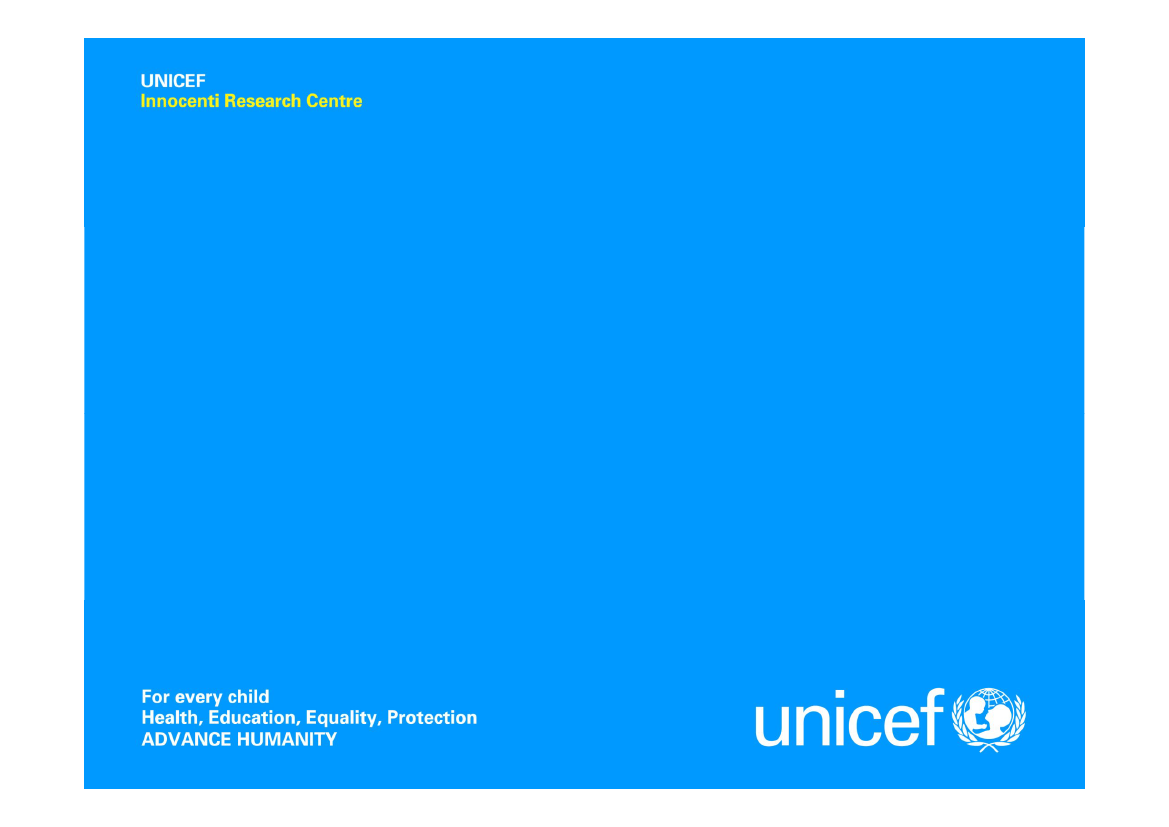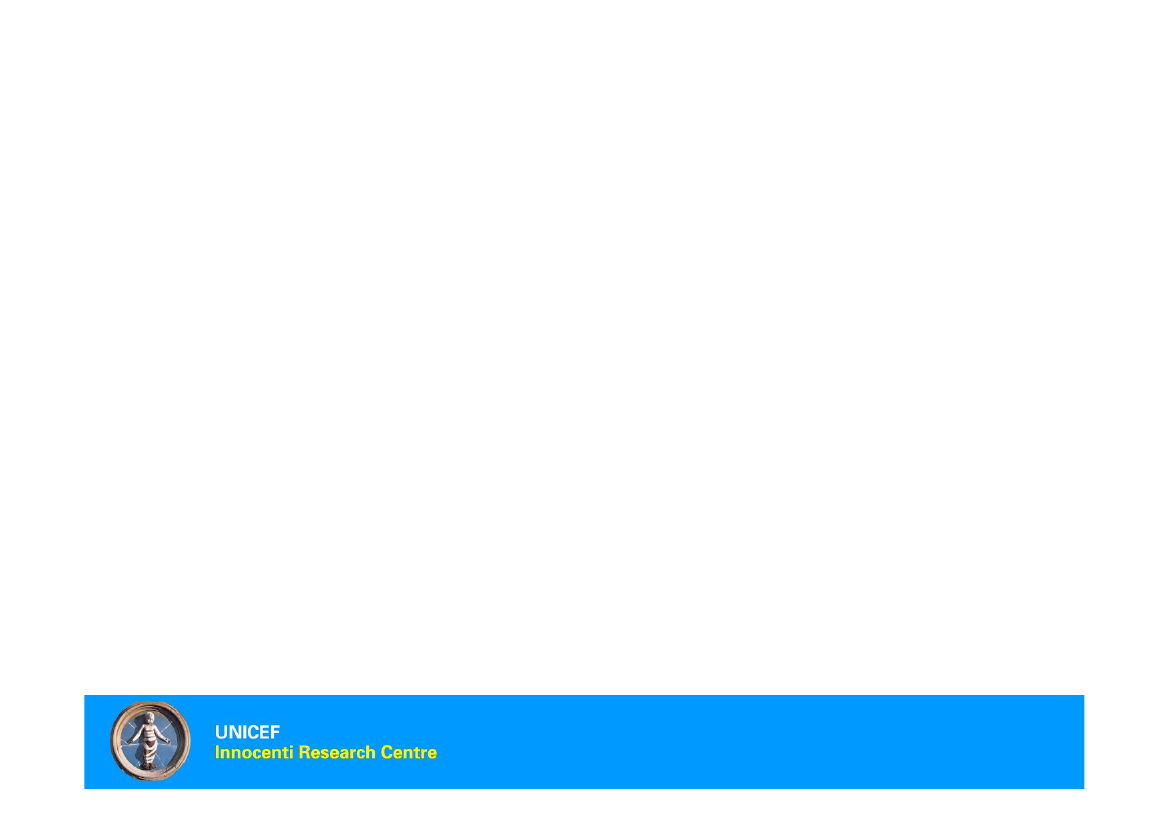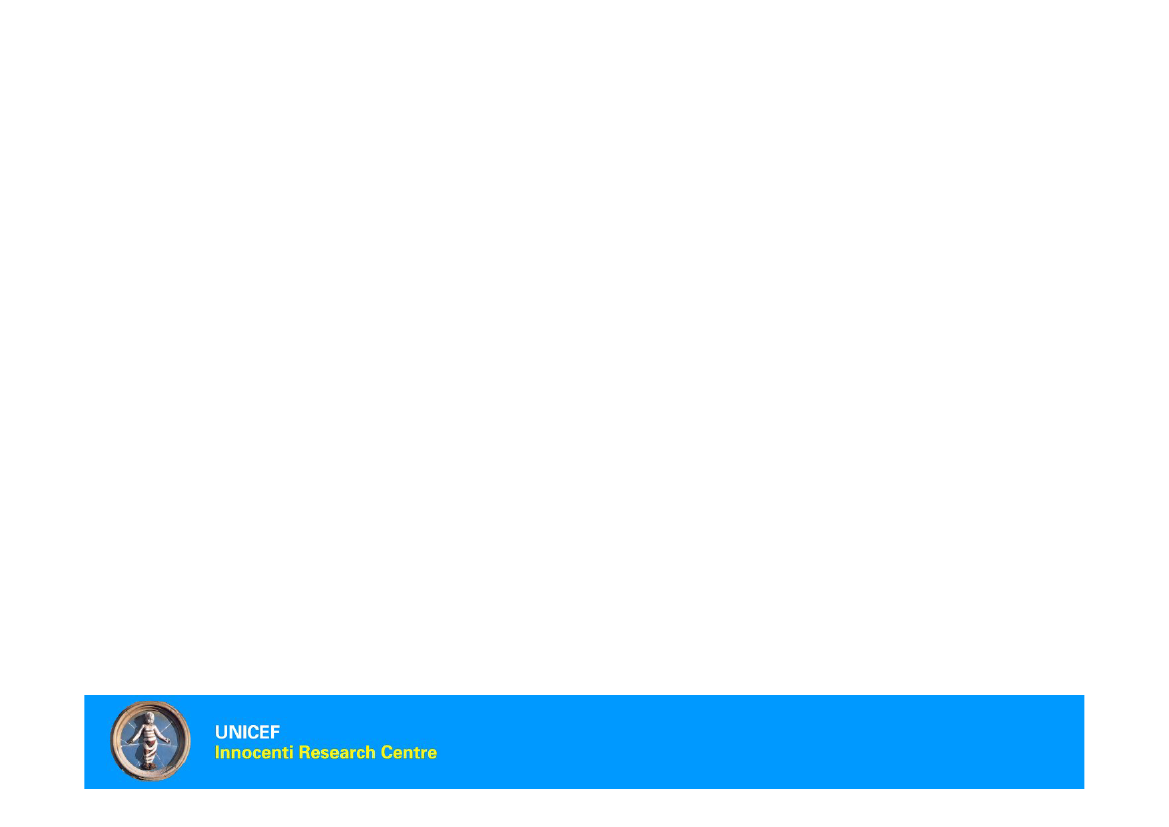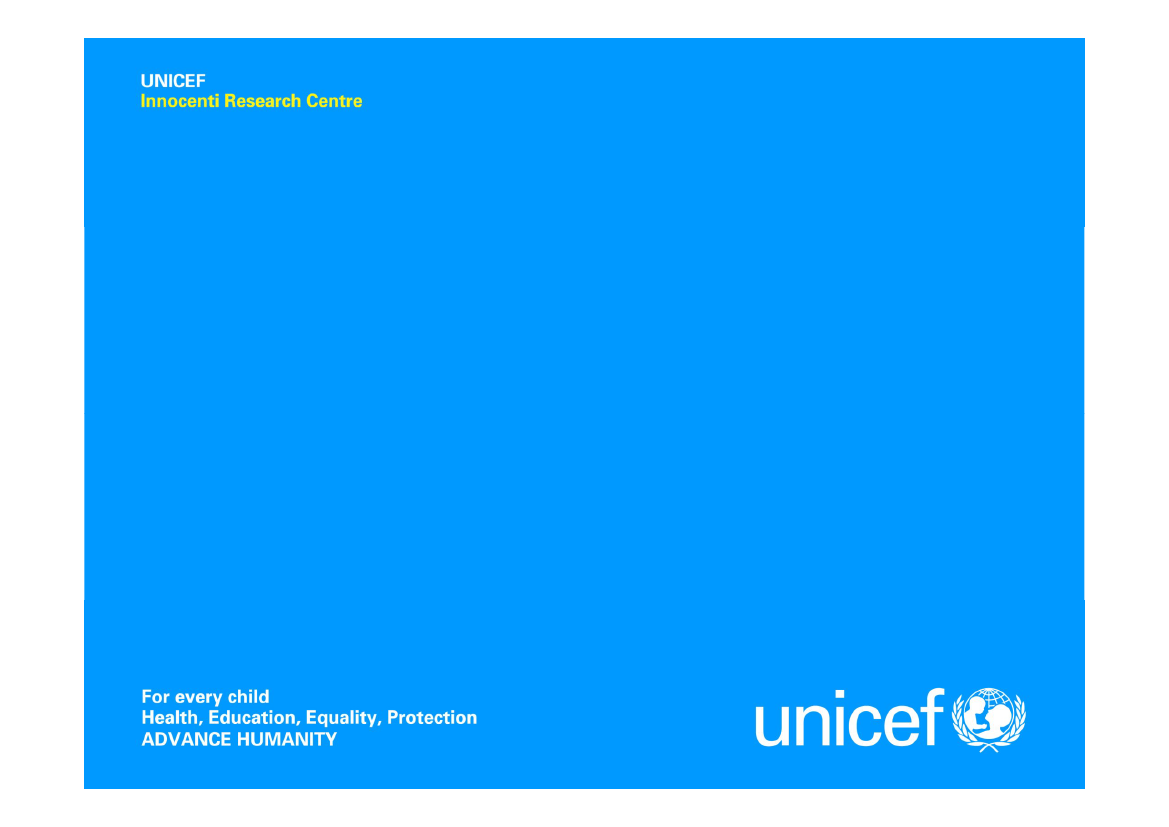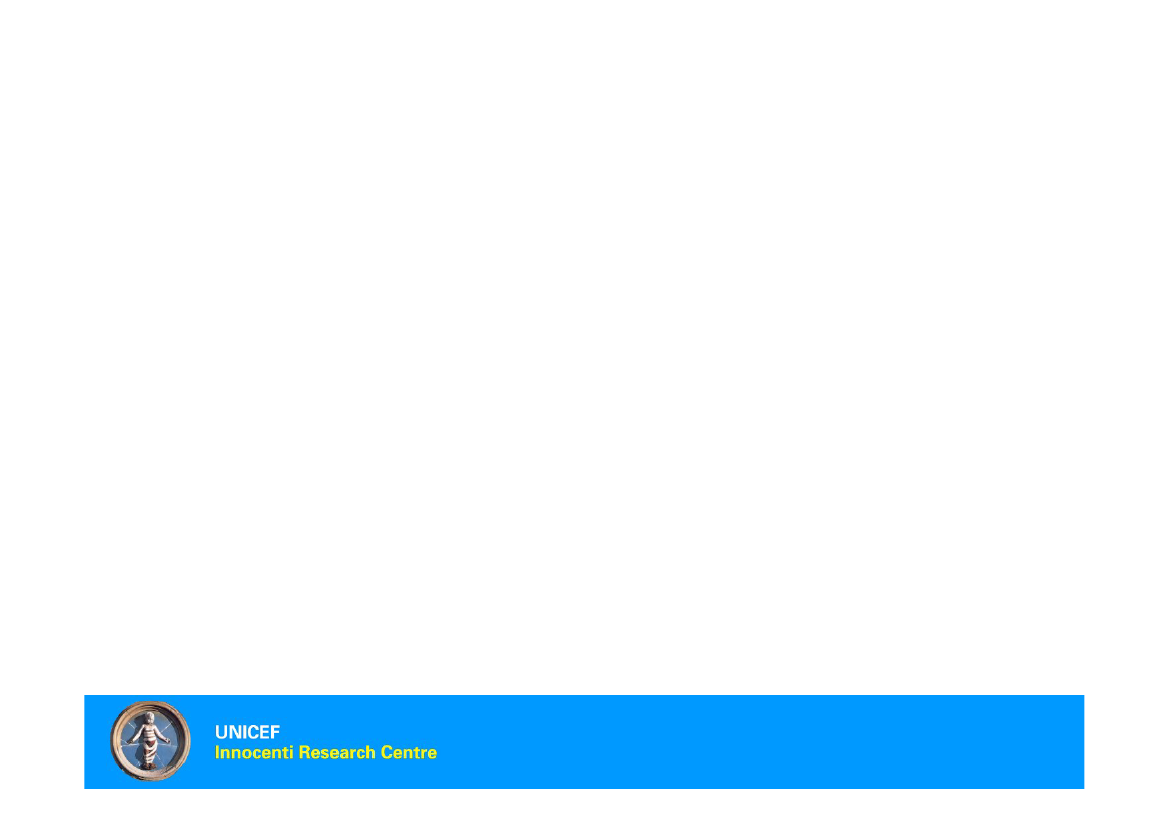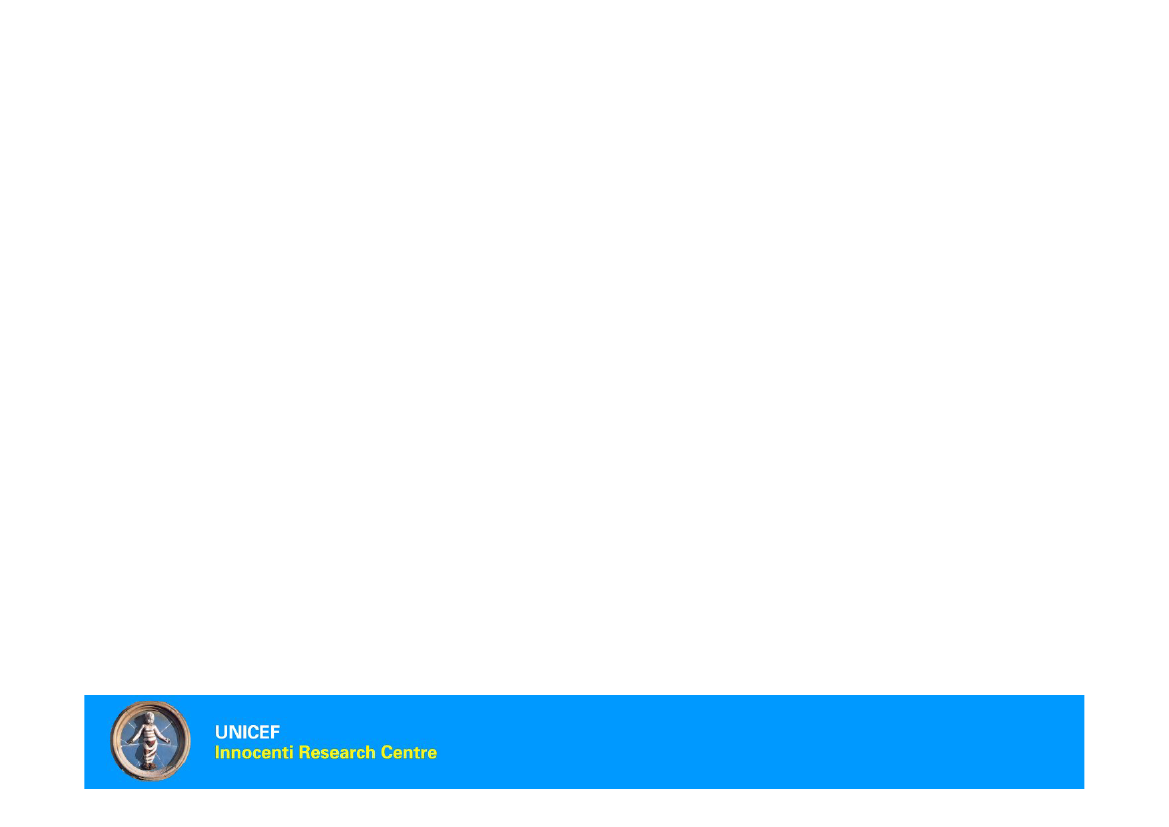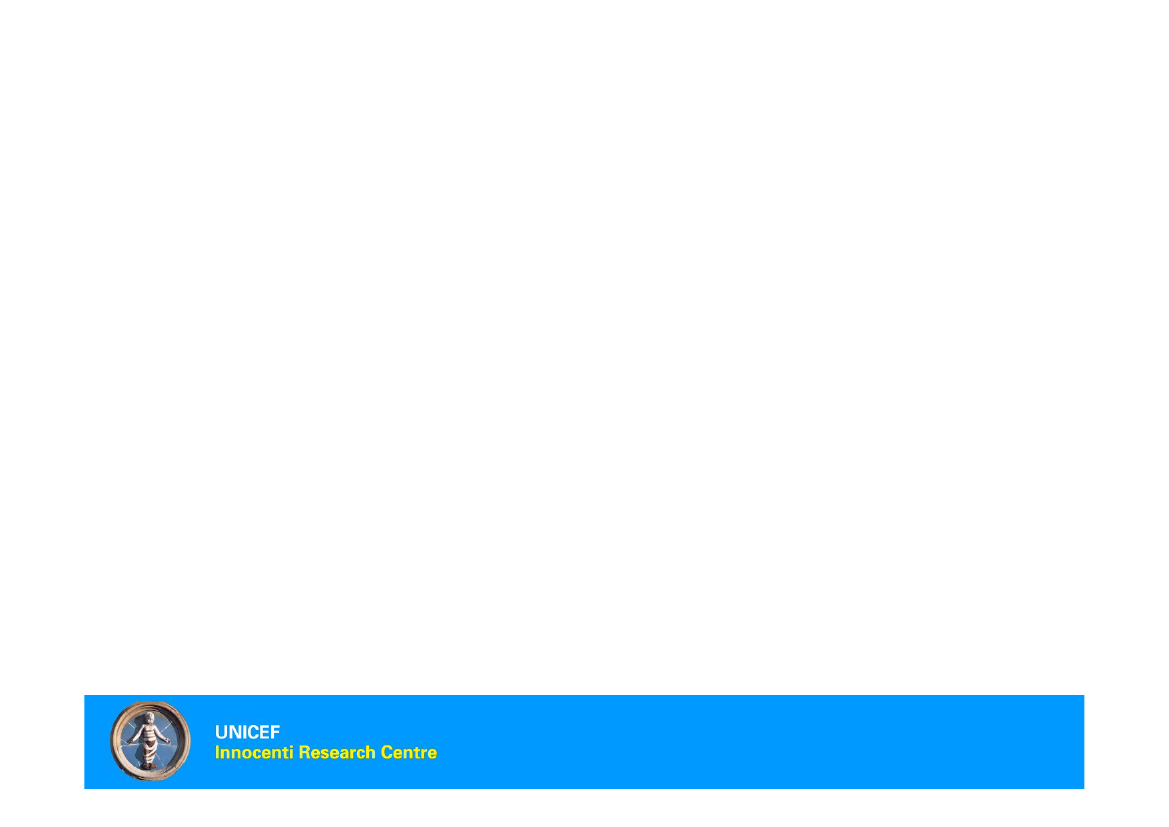Socialudvalget 2011-12, Ligestillingsudvalget 2011-12, Beskæftigelsesudvalget 2011-12, Retsudvalget 2011-12, Udvalget for Udlændinge- og Integrationspolitik 2011-12
SOU Alm.del Bilag 198, LIU Alm.del Bilag 35, BEU Alm.del Bilag 100, REU Alm.del Bilag 253, UUI Alm.del Bilag 75
Offentligt
Child Trafficking in the Nordic Countries:Rethinking Strategies and National Responses
Innocenti Research Centre/UNICEF Office of ResearchJasmina Byrne, Child Protection Specialist
The outline••••••Scope and MethodologyCRC as a framework for protectionResponses of the Nordic countries to Child TraffickingGeneral Principles of the CRCLegal, judicial and administrative processesConclusions and recommendations
2
Scope and Methodology•Better understanding of child trafficking and national responses froma child rights perspective•5 country analyses presented in a regional report•Literature review (October 2011 cut off)•Key informant interviews (June – October 2010)•Review process (2010-2011)-Preliminaryreview by country-AdvisoryGroup and Steering Committee Meeting-Round-tableconsultations in each country-Peerreview of the regional report3
Sources by publisher
Key informants
Academia, 3ServiceProviders, 8
Others, 2
Government,Ministries,Authorities, 45
Organisations,Foundations, 26
IndependentInstitutions , 16
LawEnforcement, 8
N = 450 as 30 October 2011
N = 108 as of 30 November 2010
4
Part 1: CRC as a framework forprotection
DefinitionTrafficking is…(Action)RecruitmentTransportationTransferHarbouringReceiptBy means of…(Means)ThreatUse of forceCoercionAbductionFraudDeceptionAbuse of powerAbuse of position of vulnerabilityGiving or receiving payments or benefitsFor the purpose of exploitation,including… (at a minimum)(Purpose)The prostitution of othersOther forms of sexual exploitationForced labour or servicesSlavery or practices similar toslaveryServitudeRemoval of organs
When any one of the elements from each of the three columns above can be applied to thesituation of an individual, the individual is considered to be ‘trafficked’.Where the individual is under 18 years of age, however, proof of any one of the elements from eachof the first and third columns is sufficient.
6
Problems with definitions•Term exploitation is not defined in the UN trafficking Protocol(different countries interpret differently)•Differences in understanding among policy makers and practitioners•The issue of consent for children•Movement and Cross-border movement
7
Is ‘movement’ considered to be part of thetrafficking concept?Key informants’responses
N=398
Difficulties in identifying traffickedchildren•Some difficulties related to definitional issues•Different agencies involved in identification with different screeningtools•Difficult to identify children trafficked within EU•Accompanied children might not come to the attention of immigrationauthorities or police•Child victims do not always exhibit stereotypical behavior•Children may resist being ‘labeled’ as trafficked•All of the above supported by statistics in the Nordic countries (smallnumbers – Denmark 2006-2011 6 verified child victims)
9
Issues facing other vulnerable children•Migrant children exploited at source, transit and destination countries•Separated asylum-seeking children have aspirations to work often ingray market that puts them at additional risk of trafficking andexploitation•Children missing from reception centres (due to their asylumapplication or re-recruitied into exploitation?)•Evidence of children exploited through drug selling, begging, pocketlifting•Undocumented migrant children particularly vulnerable•National children victims of exploitation•Multiple vulnerabilities and movement between different ‘categories’•Question: Is there an underlying protection (and child rights) value oftrafficking categorization?
10
Moving beyond the traffickingframework•Focusing services and assistance on the nature of exploitation of thechild•Potential victims of trafficking a concept that allows prevention andearly support•CRC transcends definitional and conceptual difficulties irrespective ofthe status of the child•Individual needs assessment and safeguardingallrights of allchildren is crucial
11
Part 2: Responses of the NordicCountries to Child Trafficking
Serious endeavors and positiveinitiatives•All countries ratified UN Trafficking Protocol, CRC, and other relevantinternational instruments•Special sections in the legislation, action plans•General principles of the convention incorporated in constitution,child rights statutes and sectoral laws•Examples of good practice and innovative interventions across theregion•Co-ordination mechanisms established in all countries•Existence of strong child porection services at the local level
13
Areas of concern•Different institutional mandates offer specialized services but maylead to fragmentation of services•Not always clear how different action plans relate to each other –potential overlap or areas that slip through the cracks•Best interests assessments for the child (both for short term and longterm solutions) carried out sectoraly•Lack of clarity of local level services for non-resident childrenincluding those who may be victims of exploitation and trafficking.
14
Leading central administration institutions for policy planning onchild rights issues (example of multiple services)
Responsibility forpolicymaking on:Child protection / welfare
DenmarkMinistry of Social Affairs
FinlandMinistry of Social Affairs andHealthMinistry of the Interior,with the Finnish ImmigrationService
IcelandMinistry of Social Affairs,with Government Agency forChild ProtectionMinistry of Justice
NorwayMinistry of Children,Equality and Social InclusionMinistry of Children,Equality and Social Inclusion,Child Welfare Service(children aged under 15years)Ministry of Justice and thePolice,Norwegian Directorate ofImmigration (children agedover 15 years)Ministry of Justice and thePolice
SwedenMinistry of Health and SocialAffairsMinistry of Justice, with theSwedish Migration Board
Unaccompanied asylum-seeking children
Ministry of Refugee,Immigration and IntegrationAffairs,with the Danish ImmigrationService
Child victims of trafficking
Coordination ofimplementation of the CRC
Ministry for Gender Equality,with Danish Centre againstHuman Trafficking,Ministry of Justice,Ministry of Employment,Ministry of Interior andHealth, andthe Danish Ministry ofTaxationMinistry of Social Affairs andIntegration
Ministry of the Interior,with the Finnish ImmigrationService
Ministry of Justice
Ministry of Integration andGender Equality
No information available
No information available
Ministry of Children,Equality and Social Inclusion
Ministry of Health and SocialAffairs
15
Denmark:•Convention on the Rights of the Child has a status of a source of nationallaw•Denmark developed a new action plan 2011-2014 with allocated budget –children feature prominently•Support for anti-trafficking initiatives globally - a positive feature of the plan•Further refinement and co-ordination of national mandates needed(welcome)•Status of a potential victim? While it exists as a concept it is not a legalstatus•Extension of outreach services welcome for identification of victims andextending services to potential victims•Opportunities to offer expertise to the local level through the nationalmechansims
16
Part 3: General Principles of theConvention on the Rights of the Child
The right to non-discrimination•Present in all national laws•In practice discrimination still exists•in relation to the legal and administrative status of thechild•Based on how the exploiters are charged (Sweden,Finalnd)•Age – different services for different age groups(Norway)
18
Best Interest of the Child: Strenghts
-Strong provisions in laws and policies relating to----Child protection and social servicesCustodyAlternative careAsylum procedure
-Child Welfare Act Finland (positive example):-Issues to be considered when best interests are being assessed
19
Best interests of the child:Challenges•Sector-specific approach: Fragmented mandates•Complex concept: No common understanding•Some children are excludedChildren who have been exposed to trafficking or are at risk of itmay not benefit from a best interests assessmentNot consistent for all children and take into account all rightsincluding the right to be heard•UNHCR operational guidance offer suggestions•Country example Finland:
Development of a psycho-socialinterviewing model to assess the best interests of the child in theasylum procedure
20
The right of the child to be heard•Different age limits (Denmark 12)•Gaps in systematic recognition at all levels and all groupsof children in particular in relation to legal and judicialprocesses•Little information from children and how they are beingconsulted in respect to service provision•Problems with interpretation•Child sensitive complaint mechansims
21
The right to life, survival anddevelopment•Difficulties in accessing the same level of services fordifferent categories of children•Guardianship and durable solutions as an example ofrelevance of all principles
22
Part 4: Legal, judicial andadministrative processes
Non punishment and deprivation ofliberty•Issues around children exploited in criminal activity or begging – notalways considered victims•Offences committed by children in connection to their situation e.g.carrying false documentation should not be criminalised•Children deprived of liberty for various reasons (immigrationdetention, children demonstrating self-harming behaviour, children atrisk of being re-trafficked) – contrary to the Convention•Children missing from open reception centres a problem but solutionthrough closer monitoring and supervision, prompt guardianship andoutreach work
24
Return, transfer and stay•••••Guiding principles under EU Return Directive and Gen. Comment 6In practice: return does not always follow Best Interest DeterminationRisk assessment and follow up could be beneficial (e.g. Norway)Differences for EU and non-EU citizens (Denmark)Transfers Under Dublin II sometimes problematic – not samestandards in all EU countries•Reflection period for child victims of trafficking too short•Temporary residence permit often depend on willingness to co-operate with authorities•Child specific grounds for asylum allow application on the basis ofallforms of exploitation (not only traffikcing)25
Conclusions and Recommendations
Conclusion•Clear categorization of children is not possible. Though the status ofthe child should not be relevant in practice it still is•Is there or (should there be) a specific benefit from identification andverification of the child victim of trafficking? (from a child protectionand child rights point of view) Or should evidence of exploitation ofthe child be sufficient?•Should there be specific and targeted approaches to child trafficking?Or should there be integration of services for child victims oftrafficking into other structures while at the same time developingtargeted and issue specific approaches?
27
Recommendations for Denmark•Uniform guardianship system for both unaccompaniedand trafficked children – financial support and equalknowledge and training•Independent institution for children (Ombudsperson)highly recommended•Non-punishment of children in relation to offencescommitted when in situations of exploitation or traffikcing•Reduce fragmentation of authority mandates•Establishment of Children’s Houses
28
Thank you
29
